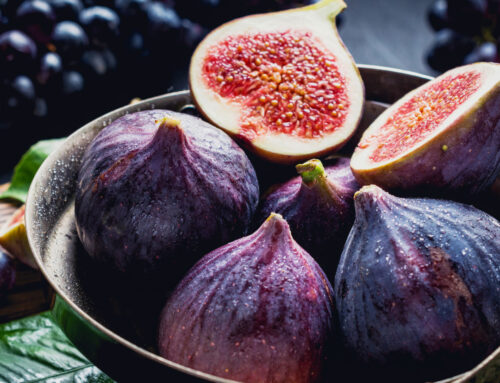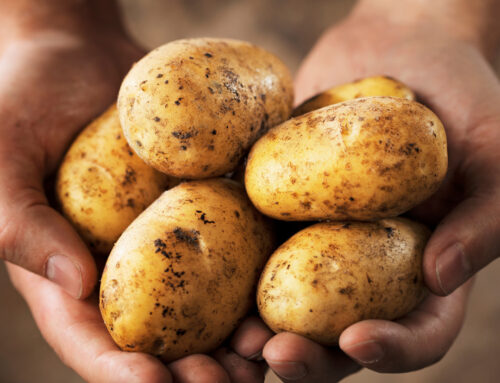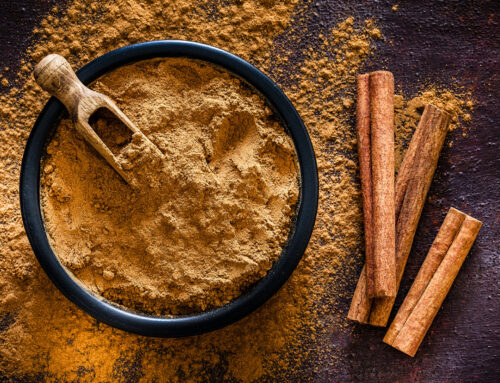The apricot was cultivated in China and Central Asia as early as 2000 BC. It migrated with traders traveling the Silk Road, with Chinese merchants likely introducing the fruit to the Persians, who called it the “yellow plum” (zardaloo). From there, it was spread throughout the Eurasian steppe by nomadic, horseback-riding tribesmen.
This member of the rose family is related to the plum, peach, cherry, and almond and is known botanically as Prunus armeniaca, a reference to the ancient land of Armenia from which the ancient Greeks believed it came. (The apricot the national fruit of Armenia and a symbol of national identity. Learn more about the Armenian relationship to the apricot here.)
The Romans, who learned of the apricot in the first century AD, dubbed it praecocum, the “precocious one,” as they noticed that the fruit bloomed early in the summer. This fragile fruit has long been a favorite of royals and aristocrats.
According to Joel S. Denker, author of The Carrot Purple and Other Curious Stories of the Food We Eat (2015), the conquering Arabs took the luxurious fruit from Central Asia to the Middle East. The caliphs, who ruled the vast Islamic empire stretching from the Gulf to Sicily between AD 750 and 1258, imported apricots from Tus in northeastern Persia to their capital in Baghdad. The chefs of the court created dishes for the al-barqouq (“apricot” in Arabic), which spread throughout the Islamic empire. In addition, the Arabs picked up adding tangy fruit from the Persians, such as apricots and cherries, to meat dishes. The delicacy called mishmishiya (lamb and apricot stew) is one such well-known dish.
Here is a Moroccan variation of said dish, transforming a cut of meat into a thick, aromatic, meltingly tender stew with chickpeas and dried fruit. If you like, steam the couscous with a large pinch of saffron. https://www.epicurious.com/recipes/food/views/lamb-tagine-with-chickpeas-and-apricots-367761
In addition to savory meals, the apricot fits neatly into the repertoire of Arabic desserts, especially when stuffed with almonds or almond paste. The fruit complemented its nutty relative. For example, a decadent treat of rose or orange blossom water perfumed pureed apricots and whipped cream topped with pistachios or almonds was a favorite combination.
QAMAR AL-DIN
Qamar al-Din, which translates to ‘Moon of the Religion,’ is an apricot beverage typically enjoyed during the Muslim holy month of Ramadan.
To produce Qamar al-din, traditionally apricots and sugar are boiled over a fire and strained through an olive oil soaked wooden strainer and left to dry in direct sunlight. The resulting dried apricot leather is thick, and has a robust flavor suitable for making Qamar al-din. Once you have the apricot leather softened with water to make a drink, one may add rosewater or orange blossom water, additional apricot pieces (fresh or dried), and ice.
Qamar-al-din is traditionally served thick and cold. Full of energy, electrolytes, and hydration, this refreshing drink provides welcomed fortification after a day of fasting. Some in the Levant add pine nuts and ice to their qamar al-din, making a beverage that resembles a thicker, apricot-flavored version of jallab.
QAMAR AL-DIN RECIPE
To make Qamar al-din at home, try this recipe from Amira’s Pantry:
First, you will need apricot paste. According to Amira, the best is from Syria and may be available at Middle-Eastern grocers or found online. However, it is straightforward to make at home. Here is a recipe from Amira’s website:
Ingredients & Directions for Apricot Paste
2 cups dried apricots, chopped
1/2 c water
1/4 c sweetener
1 tsp lime juice
Using a heavy saucepan set on medium heat, add the dried apricot, water, and lime juice, stirring well to combine. Bring the mixture to boil, reduce heat, and gradually add sweetener until you reach the desired sweetness.
When the fruit pieces are tender, you can turn off the heat and let it set to cool down. Add a little water if it needs to soften more.
Preheat your oven to the lowest temperature.
When your apricot mixture is cool enough to handle, transfer to a blender and process well until you get a spreadable paste. You may add a little water if it is too thick. Spread the paste on a 9X9 pan lined with parchment paper and put it in your warmed oven until it is dry but still sticky to the touch. This may take up to 4 hours.
This recipe will give you 300gm of Qamar Eddeen apricot paste.
And now, for the drink recipe!
Ingredients & Directions for Qamar-al-din Apricot Drink
400gm of Qamar Eddeen or homemade apricot leather (see above)
3 cups water
1/3 cup honey
Cut the apricot leather into small pieces.
Put the piece in a deep bowl and then cover with water.
Refrigerate overnight.
Process the apricot with water and sweetener in a blender until smooth.
If you prefer, you may strain the mixture (optional) before refrigerating until serving time. Serve cold, diluting or add ice according to your preference.
Also called Amardeen, apricot leather or paste can be transformed into puddings and other sweets. Here is a recipe from Taste of Beirut for apricot bars. If you don’t have access to apricot paste you can use concentrated nectar. https://www.tasteofbeirut.com/amardeen-bars-apricot-bars/
HEALTH BENEFITS OF APRICOTS
Apricots are loaded with vitamins, flavonoids, and potassium. Flavonoids protect and strengthen your blood vessels while reducing signs of inflammation. Potassium is an essential mineral for nerve and muscle function and helps nutrients move throughout the body. Potassium also supports healthy blood pressure and heart health.
Vitamin E and vitamin C are antioxidants that are beneficial for the skin, helping protect skin cells from ultraviolet (UV) radiation, reducing signs of early wrinkles, and improving skin elasticity. Beta-carotene, another antioxidant, helps protect the skin from sunburns and damage. With a high water content, apricots also hydrate the skin. One cup of apricots yields roughly 2/3 cup of water.
Apricots promote eye health through their rich vitamin A, beta-carotene, and other carotenoids content. Lutein supports retina and lens health, and carotenoids and vitamin E support overall vision. The nutrients in apricots also help to reduce the risk of macular degeneration and cataracts.
The soluble fiber and insoluble fiber in apricots are beneficial for your digestive tract. Soluble fiber helps your digestive tract retain enough water and encourages good bacteria to thrive. Insoluble fiber aids with healthy gut bacteria levels.
To receive the most benefit from apricots, eat fresh, dried, or cook below 190 degrees F, the temperature Johns Hopkins University studies reveal is when nutrients are destroyed in cooked food. To maintain your cooking temperature is optimal for nutritional benefits, use Saladmaster cookware, patently designed to optimize the nutritional integrity of your food. Learn more about Saladmaster cookware.
For a healthier dish featuring the precocious apricot, here is a salad from the Saladmaster Foodture blog.





